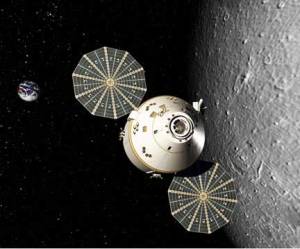Jul 30 2010
NASA, Lockheed Martin Space Systems Company and Ball Aerospace & Technologies have successfully completed the technology demonstration of a novel docking navigation system.
 The Orion Crew Exploration Vehicle
The Orion Crew Exploration Vehicle
The system will be used to monitor the docking operations of the spacecraft flying to the ISS (International Space Station). The ISS displayed advanced sensors by simulating manned and un-manned docking operations.
Lockheed Martin, Ball and NASA jointly developed the navigation system model. The astronauts, aboard the STS-134 spacecraft, will test the system in an on-orbit maneuver. The test will be done during the space shuttle mission to the International Space Station in February 2011. The test will be conducted as a part of the STORRM (Sensor Test for Orion Relative Navigation Risk Mitigation) DTO (Development Test Objective). On the 11th flight day, the crew will undock from the International Space Station and will rejoin the ISS on an Orion-based approach.
The Orion crew exploration vehicle of NASA has introduced novel technologies in avionics, thermal protection systems, navigation systems, structures and composites. STORRM’s hardware comprises two sensors namely the DC (Docking Camera) and the LiDAR VNS (Vision Navigation Sensor). These sensors will be utilized on the Orion shuttle to provide high-resolution, 3D images to the crew.